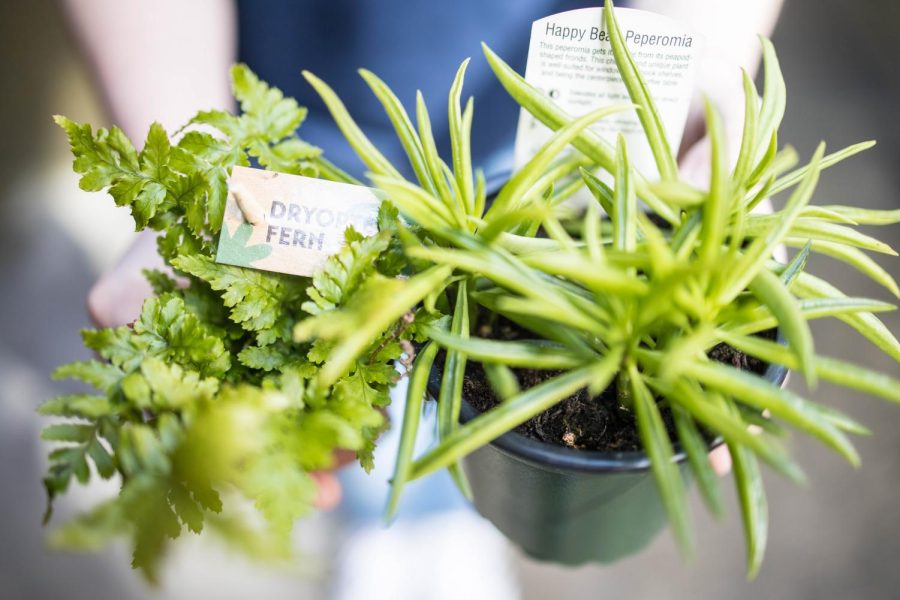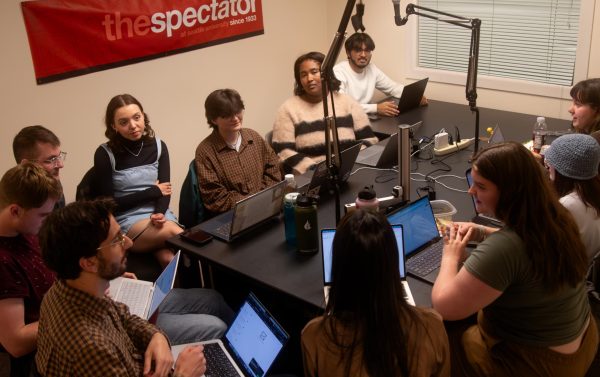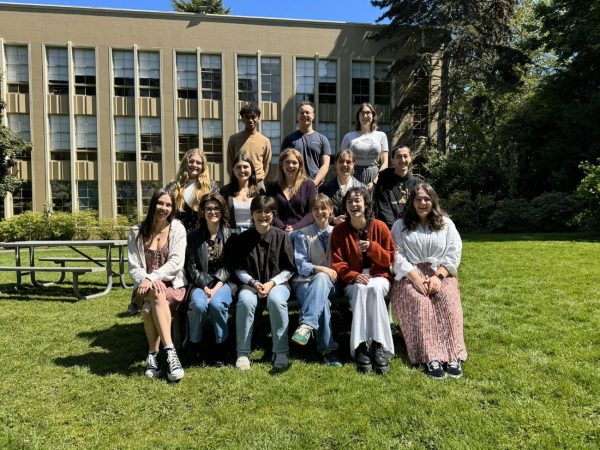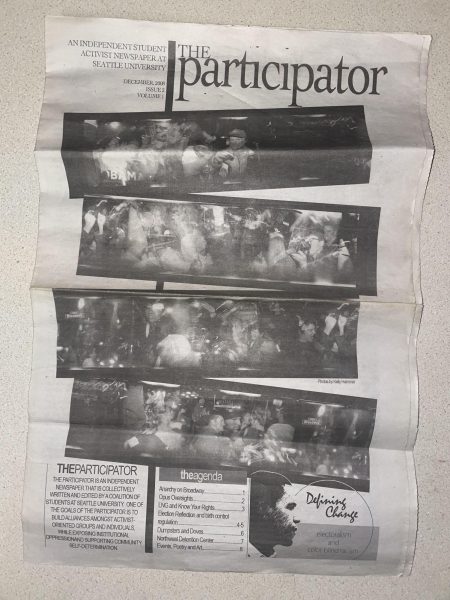Earth Month Brings Educational and Immersive Opportunities
Two plants from plant sale
U.S. Senator Gaylord Nelson (D-Wis.) teamed up with Senator Pete McCloskey (D-Calif.) and the young activist Denis Hayes to create the first Earth Day celebration in 1970. Earth Day sparked a movement which gained momentum by the end of that year with the creation of the U.S. Environmental Protection Agency. By 1990, Earth Day was celebrated all around the world. Today, over 190 countries celebrate the annual event. Worldwide, people attempt to bring more awareness to the environmental issues affecting our planet annually April 22.
At Seattle University, Earth Day has become a month-long celebration taking place throughout April. This year’s celebrations, led by the Center for Environmental Justice and Sustainability (CEJS), saw participation from Seattle U Grounds and Landscaping, Redhawk Dining, Residence Hall Association, multiple student groups and many other organizations.
Sustainability Manager at CEJS Yolana Cieters described putting together the events and engagement opportunities for Earth Month to be a very organized and organic process. The rationale behind expanding Earth Day into a month-long celebration was to add accessibility for participation and provide the ability to go more in-depth with pressing issues such as climate change and sustainability.
“It’s a great opportunity to re-energize and re-engage the folks, individuals and organizations at Seattle U and deepen their commitment and work for change on these issues,” Cieters said.
Throughout the month, there were various ways to get involved, whether that be through hands-on projects or attending talks about issues within the broader conversations on sustainable development, climate solutions and environmental justice.
Seattle U Grounds and Landscaping works year-round managing the more than 50-acre campus, from keeping pathways clean to maintaining the various sports fields. During Earth Month, Grounds saw heightened engagement from students who worked outdoors to plant trees and learned how to use various gardening tools and effective planting techniques, as well as the sources of the food they eat.
Grounds and Landscaping Manager Shannon Britton finds it very important for students to get outside and have involvement with their environment. She noted that for the first time, olive trees were planted on campus as one of the activities.
“It’s a holistic experience for the students,” Britton said. “They help us plant trees, groundcovers and remove invasive vegetation, so we get them involved with urban agriculture and the animal campus program we have. We’re pesticide-free, so we have to be mindful about how we remove [invasive] things and we have conversations on how to take care of our land.”
All the events during Earth Month stemmed from the main April 22 celebration. This year saw the third edition of Earth Talks, a series of short presentations from Seattle U community members and partners related to the theme of Just Sustainability-Care for our Common Home with Washington State Senator Rebecca Saldaña and Seattle U alumnus David Mendoza giving the keynote address.
Cieters stated that the virtual format of the event is a positive change that they learned in 2020 as it helps increase accessibility and decrease the overall environmental footprint of Earth Month events. Across the two virtual sessions on Earth Day, members of the Seattle U community got to hear from a wide range of specific focuses.
Third-year Environmental Studies student Gabby Batinich and Assistant Professor of Environmental Studies John Armstrong presented on City Climate Mitigation Strategies and Policy Transitions, which focused on Armstrong’s research surrounding city climate policy as a stepping stone into substantive change on climate action, greenhouse gas emission reduction and roles of modest policies.
“I think we in Seattle and Seattle U have a wonderful opportunity to lead by example on climate change and sustainability by taking the difficult actions that are so necessary to truly make the campus as environmentally friendly as possible,” Armstrong said.
Along with presenting, Batinich was the winner of the Earth Month logo competition. Her design can be seen all over posters and materials from events. Self-described as creative, the competition was a way for her to express herself and share her culture.
“I’m Latina and I wanted to incorporate an indigenous art style called Molas,” Batinich said. “For me, it’s important that people understand that environmentalism, climate action and environmental justice have to revolve around everyone and it has to be intersectional.”
Director of Environmental Studies and the Institute of Public Affairs Tanya Hayes’ talk centered around funding for environmental services programs that pay individuals and communities to conserve forests for carbon sequestration. The research Hayes presented has taken course over the last 10 years, focused on a program in Ecuador. The team she worked with investigated sustainable and equitable practices for businesses. The research also examined the psychological reasons that the labor force works toward compensation, and the psychological impact of halted payments.
When payment stopped in this case, conservation activities still continued, which is a positive for environmental benefits and sustainability. However, it does become a concern when it comes to the economic standings of the community, which to some degree is reliant on the promised payments.
“There’s a balance that you want to have [with] the environmental sustainability but also want to be just and equitable in terms of the promised payments, making sure they’re being compensated,” Hayes said. “Justice goes both ways.”
Fourth-year Environmental Studies and Women, Gender and Sexuality Studies double major Taylor Kaili McKenzie, presented on gender diversity in farm agriculture—an intersectional conversation highlighting the patriarchal structures within the agriculture industry and the universal harm that comes when structures systematically empower one group to the detriment of historically marginalized people. McKenzie is also the undergraduate at-large representative for the President’s Committee on Sustainability, and is actively engaged in conversations around sustainability on campus.
“I chose the gender disparity in farmland ownership to demonstrate the missed opportunity for wealth production through generational ownership and the ability to inherit land matrilineally,” McKenzie wrote. “This also reflects how women are unable to access leadership roles to cause change, a self-fulling cycle that needs to be broken. I hope that research such as mine will lead to increased awareness about gendered differences in the most important economic sector in the world.”
At Seattle U, the events, activities and conversations during Earth Month reflected a dedication for the protection of the planet, the issues of climate change and sustainability. The Earth Talks showcased the diversity of viewpoints on sustainability and the environment. Entering into these conversations and interacting with the environment is a necessary action—but it’s only the start.











